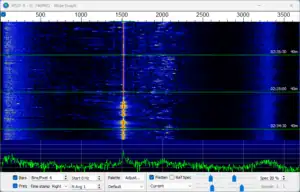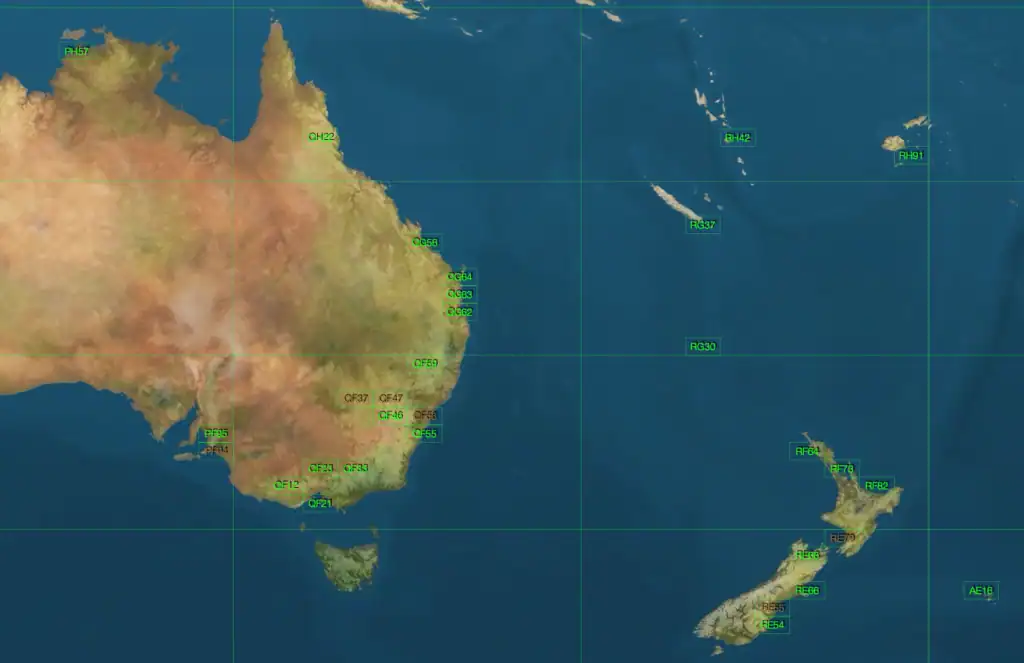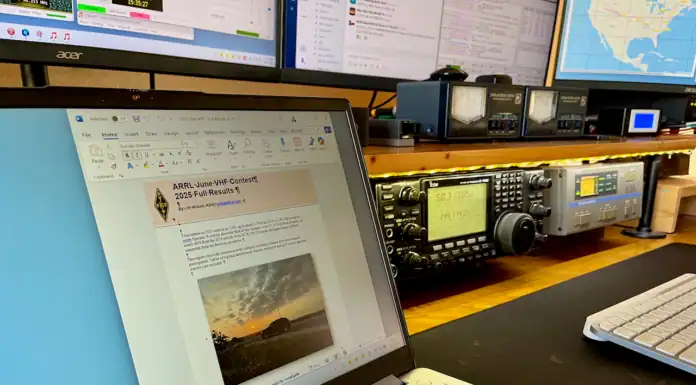About this time last year, I published a blog titled Ham Radio Bits & Pieces, which covered all sorts of happenings in and out of my ham shack. Well, I’m doing the same this year. All these items might not be worth a full blog post on their own, but together, they at least highlight some of what I’ve been up to.
Frequency Measuring Test
This past week, I took part in the ARRL Frequency Measuring Test. This twice-yearly event challenges you to measure four signals, two on 40 meters and two on 80 meters. I’ve performed reasonably well in recent events.
For the November test, I managed to get into the green box for results, indicating each signal was measured with less than 1.0 Hz error. I had some trouble with QRM and adjusting WSJT-X on one of the measurements. Despite that, I barely scraped by with a 0.03 Hz error within the 1.0 Hz tolerance!
I use the capabilities of WSJT-X for frequency calibration and measuring test signals. This involves warming up my Icom IC-746PRO with the CR-388 high-stability TCXO for a couple of days. Then, about an hour before the test, I calibrate WSJT-X against several frequency standards from WWV and CHU. I measure the one-minute keydown for the test signal and then average the measured samples. You can find the screenshots nearby.
New 6-meter DXCC
I’m a dedicated grid chaser on both 6 and 2 meters. It’s becoming harder to find new grids on 6, and definitely new DXCCs. That’s not just because of poor propagation but because I’ve already worked most stations.
However, there have been a few openings on 6 that have allowed some new DXCCs to appear on my screen and be added to my logbook. Here’s the list: 7Q2MM, C5R, VP2MAA, LA3MHA, SM7CAD, OH0Z, and OH1LEU.
Writing ARRL June and September VHF Contest Full Results Articles
I have the enjoyable task of writing the full results articles for the June and September VHF Contests. You can find the results for June 2023, 2024, and 2025 at June VHF Contest Articles. For 2025, I was able to include a few more layers of analysis. One thing to note is that, for the June 2025 contest, 1,296 stations submitted their logs. However, there were 7,459 different call signs found in those submitted logs. This gives you some idea of the actual participation in this contest.
You can find the results for September 2024 and 2025 in the September VHF Contest Articles. In fact, the 2025 article is almost finished and may be posted by the time you read this. It includes a similar level of analysis, with 559 logs submitted and an impressive 3,092 different call signs in those logs.
For more details on writing VHF contest result articles, visit my blog post Behind the Keyboard.
VHF Contesting Planned Improvements
You may have followed my VHF contest results through the articles I’ve posted for each contest and the page I created covering Hilltopper and Single-Op Portable operations.
The single-op portable category has been really enjoyable. Traveling out to EM01 and setting up a 10-watt portable station is a big upgrade from my previous roving efforts, which involved a lot of driving and equipment that was prone to SNAFUs. Plus, it’s been a successful spot for contacts with Austin, San Antonio, Houston, and Dallas-Fort Worth, including only rovers operating from the grid. Additionally, I’ve added my first-ever category-winning plaques to my ham shack, including the CQ WW Hilltopper 2024 (the last QRP hilltopper in this contest) and a plaque for the June 2025 VHF contest that’s on its way.
The improvements I’ve made include a new laptop, a new 144/432 antenna, running SO2R, and adding a LiPo battery. I’ve considered many other ideas but haven’t found anything that would significantly improve my operation. We’ll see what the weather brings for the January contest. If it’s too cold, I may consider operating from home.
I’m back with an update from 14-November-2025. There was a simply incredible opening to Australia and New Zealand on 6 meters last night. I managed to work 16 new VK stations and, within that group, nine new grids. I heard some ZL and FK stations, but had already worked them in times past. Here’s the map of my grids in that area.
That’s the odds & ends from K5ND. Hope to see you on the air, preferably in a new grid!









